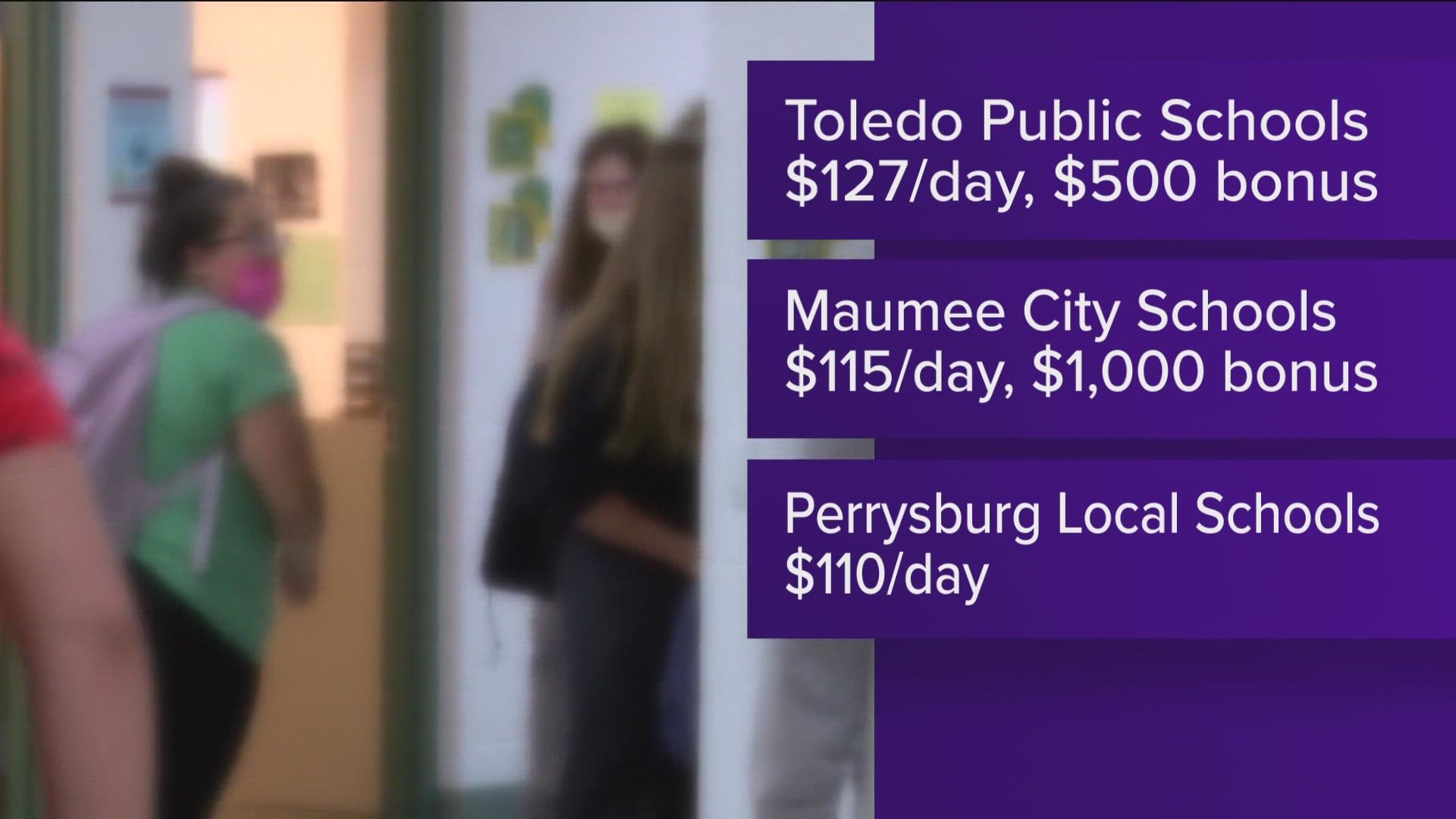TOLEDO, Ohio — With teaching shortages across the country, school districts are looking for ways to fill classrooms with qualified educators and professionals—but the situation may have its roots far more entangled in national educational issues instead of just not having enough people.
It's not gone unnoticed that school districts are responding the most aggressively to substitute teacher needs. Incentives for teachers have been raised and qualifications have been relaxed; through the 2023-2024 school year, the Ohio Board of Education will not require a bachelor’s degree for those applying for a substitute teaching license.
At the local level, school districts are offering higher pay, bonuses and waived fees to encourage substitute applicants. Toledo Public Schools is offering $127 per day with up to $500 in bonuses per semester; Maumee stands at $115 per day with a $1,000 bonus for 150 days worked; and Perrysburg offers $110 per day. Many districts are also offering to waive licensing fees to sweeten the deal.
“The area of greatest need for Maumee City Schools at this time is hiring substitute employees,” Federal Programs and Communications Administrator for MCS Nancy Sayre said in an email to WTOL. “The school district hires throughout every school year for both substitute teachers and operational substitute positions.”
Although districts nationwide are working to fill openings for both long- and short-term substitutes, some educators believe it’s a bandage on a much deeper and infrastructural wound.
“There are literally not enough staff to keep schools open,” National Education Association President Becky Pringle said in a statement with the Associated Press. “This is the tragic consequence of decades spent chronically underfunding education and shortchanging students.”
Educators also point to declining enrollment in teaching programs at universities and colleges. According to the American Association of Colleges for Teacher Education (AACTE), the number of teaching degrees conferred were stable for several decades, then began to decrease in the early 2010s. The pandemic has expedited the process. According to the AACTE’s annual member survey in Dec. 2021, 55% of surveyed colleges and institutions saw a minimal to significant effect on Fall new undergraduate enrollment as a result of COVID-19. Among continuing students, 63% were impacted.
With the teacher pipeline simply not producing enough educators to keep up with demand and population, the question of why young professionals aren’t studying education at the rates they have in the past remains.
BGSU 2022 graduate Natalie Carey was recently hired as a substitute teacher for Maumee City Schools, where she is also an alum.
“A lot of people right now who are teaching are retiring […] and not that many people are replacing them,” Carey said in response to the current teacher shortage.
During her time in college, Carey witnessed the challenges and obstacles she and many of her classmates faced going into the profession.
“There’s no money in [teaching]. It’s a lot of work […] I feel like teachers don’t get the relief they need,” she said. “We have to provide our own supplies and we have to support ourselves. And it’s really hard to support yourself when you don’t have the funds.”
Although salaries are increasing to try to keep educators in schools, some just still aren’t enough: elementary school and preschool teachers can make as little as $30,000 per year in some districts.
Despite all these obstacles, Carey is still optimistic about her role as an educator, though it may not be a completely traditional one. After receiving her Bachelor of Science in Education, Carey passed on a teaching license for now, realizing she preferred non-traditional teaching roles like Montessori schools or counseling. Nonetheless, her passion for education remains strong.
“I really want kids to come to school because they love it,” Carey said. “I want kids to feel comfortable the second they walk through the door. And I want to be a part of that reason.”
There's no question about Carey's passion for her job, and others no doubt share her enthusiasm, but funding, pandemic stresses and the pressures placed on teachers are exacerbating the problems facing America’s future educators.

